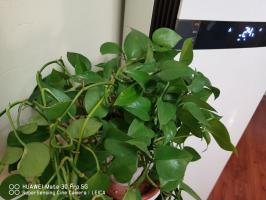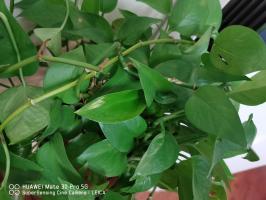Introduction
Plants have two types of transport systems: xylem and phloem. Xylem is responsible for the transport of water and minerals while phloem is responsible for the transport of organic nutrients. In this article, we will focus on the shoot system of plants and discuss what type of plants use their shoot system to transport water and minerals.
Gymnosperms
Gymnosperms are a group of plants that include conifers, cycads, and ginkgos. They are characterized by their lack of flowers and fruits and their naked seeds. Gymnosperms use their shoot system to transport water and minerals from the roots to the leaves through their xylem. The xylem vessels are strengthened by lignin, making them rigid and able to withstand the pressures of water transport.
Angiosperms
Angiosperms are a group of plants that includes flowering plants. They use their roots to absorb water and minerals from the soil and transport them to the rest of the plant through their shoot system. The xylem in angiosperms is similar to that in gymnosperms, but it is arranged differently. In angiosperms, the xylem vessels are smaller and more numerous, forming a network throughout the plant.
Monocots
Monocots are a type of angiosperm that include plants like grasses, lilies, and orchids. They have a single cotyledon (seed leaf) and parallel veins in their leaves. Monocots have a unique type of xylem called a vascular bundle. Vascular bundles are scattered throughout the stem of the plant and contain both xylem and phloem tissues. The xylem in monocots is made up of very small vessels, which can limit their ability to transport large amounts of water and nutrients.
Dicots
Dicots are a type of angiosperm that includes plants like roses, beans, and oak trees. They have two cotyledons and net-like veins in their leaves. Dicots have a more complex vascular system than monocots. The xylem and phloem tissues are arranged in a ring around the stem of the plant, with the xylem on the inside and the phloem on the outside. This arrangement allows for efficient transport of water and nutrients throughout the plant.
Conclusion
In conclusion, both gymnosperms and angiosperms use their shoot system to transport water and minerals from the roots to the leaves. Monocots have a unique type of xylem called a vascular bundle, while dicots have a more complex vascular system. Understanding the transport systems of plants can help us better understand their growth and development and can inform agricultural practices.

 how many times do yo...
how many times do yo... how many planted tre...
how many planted tre... how many pine trees ...
how many pine trees ... how many pecan trees...
how many pecan trees... how many plants comp...
how many plants comp... how many plants can ...
how many plants can ... how many plants and ...
how many plants and ... how many pepper plan...
how many pepper plan...































